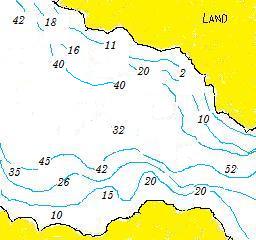Over here in this post i will discuss a very practical experience in the Panama Canal along with some pics and videos based on my past experiences so as we can understand it as a whole.
The panama canal is a 77 kilometre ship canal in Panama that connects the Atlantic Ocean (via the Caribbean sea) to the pacific ocean and it saves the trouble of nearly a 12000 kilometres....i.e which would have been caused if the panama canal was not there and someone had to cross from the pacific to the Atlantic ocean via south of south America.....
Drawn below is a sketch of the Panama canal so as it can be understood in a better manner......
Approaches to the Panama canal
Pacific Ocean Entrance-----Port of Balboa--------Miraflores locks (2 chambers)-------Pedro Miguel locks (1 chamber)--------Gatun locks (3 chambers)-----Port of Cristobal------Atlantic Ocean.
Preparations for the vessel prior approaching
- Ensure that the mooring winches and the windlass / anchor are all working in good condition.
- Ensure mooring winches are primed beforehand tried and tested (as on certain ships).
- Mooring ropes are in good condition.
- All ships equipment including machinery/bridge equipments are in good working condition and any confessions regarding the non functioning of any equipment shall be truly done beforehand to the authorities so as to avoid unnecessary heavy fines/allegations/claims for delaying other vessels.
- Another important thing is to ensure that no kind of structure is hanging out of the ship side as it might get damaged / or cause damage to the ship structure as the lock gate widths in the panama canal is very narrow...
Approaching the Panama Canal
- Pilot is on board.
- All concerned to be standby for stations.
- Prepare pilot ladder as the panama canal crew will be boarding shortly.
- At least 15-20 people board the ship depending on the size of the ship.
- Keep a good headcount and a close track of the whereabouts of the people boarding the ship.
- Mooring winches to be in a state of readiness.
- Now the ship is brought alongside by the pilot.
- Depending on the size of the ship wire ropes are passed by the canal crew on the ship basically 4 headlines and 4 stern lines.
- These lines are then passed onto the Locomotives on the jetty which are high power mini trailers which using their strength pull the ship in/out through the canal. (see fotos below).
- Once the ship is pulled in by the locomotives , the lock gates are closed and water is ballasted (filled) in ,
- These locomotives keep the wires taught throughout so as the ship doesn't suffer any damages because of any motion inside the lock while the ballasting process in on.
- Once the ballasting process is done ,the lock gate ahead is opened as the water levels are now equal.
- Now these locomotives pull the ship through.
- Please note that as per the panama canal authorities, the ships engines are not to be used inside the locks but can be used at times,depending on the circumstances / as per pilots instructions.
A ship transiting through the panama canal is the same process as a person travelling via an elevator or descalator in order to move up or move down.......So for a ship to climb up the canal every time water is ballasted (filled) in and gradually it climbs from one lock gate to the other and the reverse is the process when water is deballasted each time in each lock gate when the vessel moves down the canal.........
Attached below is a real time video made by me while i was transiting through the panama canal and i am sure that this video will make the picture of panama canal transit very clear in our minds......
From the geographical point of view the place panama is an absolute jungle and is very dense.
The Panama Canal Locomotives
- The original locomotives were manufactured by the "General Electric".
- Also known by the names "mule" or "lock mule";
- Electrically operated;
- Have an approx. weight of 45-50 tonnes;
- Maximum towing capacity of around 312 kilonewtone;
- Have an average towing speed of 5~8miles an hour;
- The locomotive traffic has increased in the passing years , on account of increasing shipping traffic and demand of more & more vessels passing through the panama canal.
- They run on a specially constructed steel track and have a 12 gear base which provides them great stability.
Attached below is another interesting video of "The Panama Canal Locomotive" operation towing the ship i was sailing on.....
Increasing the size of the Panama Canal, was a much awaited thing to be done as the increasing number and the increasing sizes of the new age ships demanded the same.In the year 2007 , a 5.2 billion dollar project was introduced to expand the canal.The work is extensively in progress and the expected completion is in the early months of the year 2015.
Undoubtedly this expansion will be of a huge potential significance to U.S trade routes,shippers,railways,truckers,manufacturers,U.S supply chains,logistics companies,owners of industrial and residential real estates as well as investors.
Your opinions / comments / feedbacks / queries are most invited....thanks for stoppingby....
cheers......
Abhishek Sabharwal.....
(Please note , that all of the photgraphs and videos as shown above , originally belong to me and i owe the copyright to all of them)


















